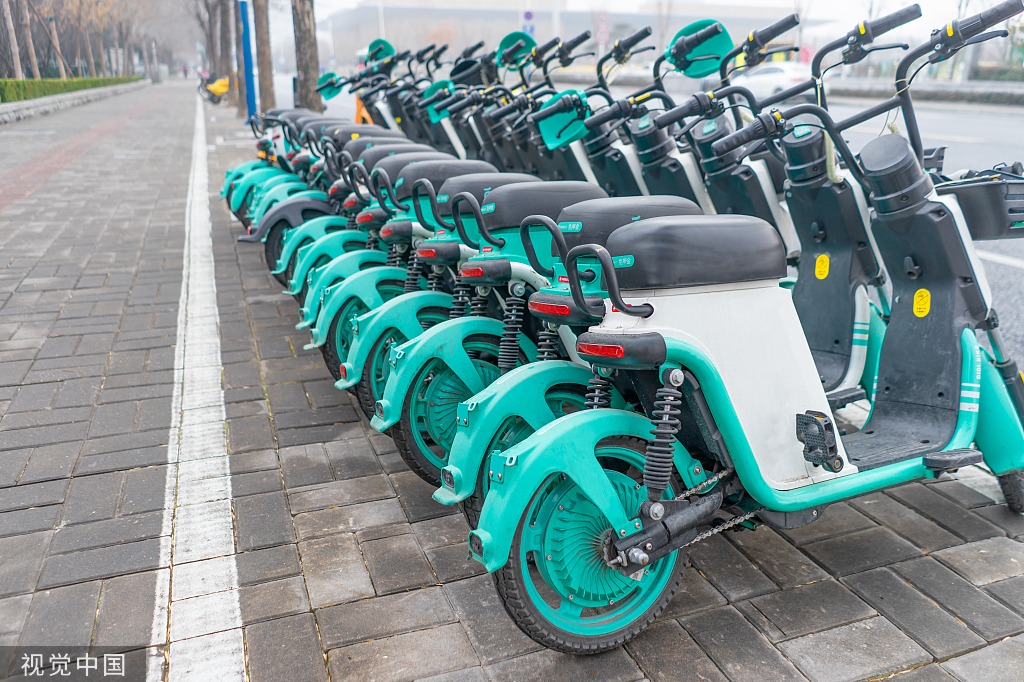Pro-consumption policies boost China's retail sector
Xinhua | Updated: 2024-11-27 17:23
NANNING - Inside a Suning chain store, a leading home appliance retailer, in Nanning, South China's Guangxi Zhuang autonomous region, colorful stickers adorned a vast array of durable goods ranging from kitchen stoves to smart toilets, with eye-catching signs reading, "enjoy up to 20 percent off with State subsidies."
These enticing offers are part and parcel of the country's 300-billion-yuan ($41.7 billion) program designed to spur equipment renewal and consumer goods trade-in.
The program, which is bankrolled by ultra-long treasury bonds, was a huge expansion of a program launched back in March.
The impact of the pro-consumption measures has been palpable, with an influx of shoppers steaming into brick-and-mortar stores across the country.
"We have seen a sudden spike in turnout since the local subsidy program took effect," said Huang Bentao, a manager at a Suning chain store. "Inquires jumped nearly ten-fold after eager buyers got a whiff of the upcoming rebates."
The sheer size of this year's discount is virtually unheard of, not to mention the range of products that qualify for subsidies under the scheme, according to Huang. "And it covers almost all models available under the subsidized categories."
Local authorities have rolled out detailed measures to implement the program in accordance with their own conditions.
Lu Yuan, a 33-year-old newlywed, who is currently decorating his new apartment, has his sights set on a seven-piece household electronics package and has been waiting for the right time to place an order.
For Lu, after months of biding his time, his patience finally paid off in August when the local government in Guangxi started rolling out a potentially unprecedented wave of subsidies targeted at those who intended to buy new appliances and vehicles or looking to upgrade existing products.
"I periodically cross-referenced prices at both brick-and-mortar and online stores to get the best deal," said Lu. "It paid off, we managed to shave about 25,000 yuan off the asking prices for the whole suite of electronics in the new place."
As of Oct 30, authorities in Guangxi have teamed up with over 2,500 enterprises across the region. Through the trade-in and subsidy scheme, about 1.53 billion yuan in various subsidies have been handed out to consumers, resulting in a surge in transactions that amounted to 11.14 billion yuan.
With the updated strategy easing eligibility restrictions and ramping up subsidies for a wider variety of goods and services, more and more consumers have benefited.
Under the auto trade-ins program, Liu Jie, a sales manager based in Guangxi's touristy city of Guilin, recently purchased a new energy vehicle for 20,000 yuan below the sticker price. But Liu's decision to make a switch from his old oil guzzler to a sleek battery-powered station wagon was initially held back by the eligibility restrictions.
"In April, I was told by the dealership that I did not qualify for the subsidy program at that time, which was a mere 10,000 yuan, because my old car failed to meet the emission standard requirements," said Liu. "But over two months later, not only have I successfully traded in my old car but also received twice as much in subsidy."
"Offering consumers tax cuts and subsidies has proved to be a straightforward and tried-and-true approach to encourage consumer spending," said Yao Hua, an expert from the Guangxi Academy of Social Sciences. "As of now, the result has been encouraging as fresh vitality has been injected into the retail sector while consumers' confidence has improved."
As reported by the National Bureau of Statistics, China's retail sales logged a 4.8 percent year-on-year growth in October this year, and it was a noticeable pickup from 3.2 percent in the month prior.
As of Nov 18, China has witnessed increased activity under the vehicle-renewal program, with over 4 million trade-in applications for passenger vehicles submitted. This initiative has contributed to a year-on-year increase of 7 percent in auto sales in October, according to the official account.
























